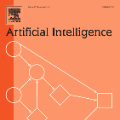We investigate the multilingual and multimodal performance of a large language model-based artificial intelligence (AI) system, GPT-4o, using a diverse set of physics concept inventories spanning multiple languages and subject categories. The inventories, sourced from the PhysPort website, cover classical physics topics such as mechanics, electromagnetism, optics, and thermodynamics, as well as relativity, quantum mechanics, astronomy, mathematics, and laboratory skills. Unlike previous text-only studies, we uploaded the inventories as images to reflect what a student would see on paper, thereby assessing the system's multimodal functionality. Our results indicate variation in performance across subjects, with laboratory skills standing out as the weakest. We also observe differences across languages, with English and European languages showing the strongest performance. Notably, the relative difficulty of an inventory item is largely independent of the language of the survey. When comparing AI results to existing literature on student performance, we find that the AI system outperforms average post-instruction undergraduate students in all subject categories except laboratory skills. Furthermore, the AI performs worse on items requiring visual interpretation of images than on those that are purely text-based.
翻译:暂无翻译




